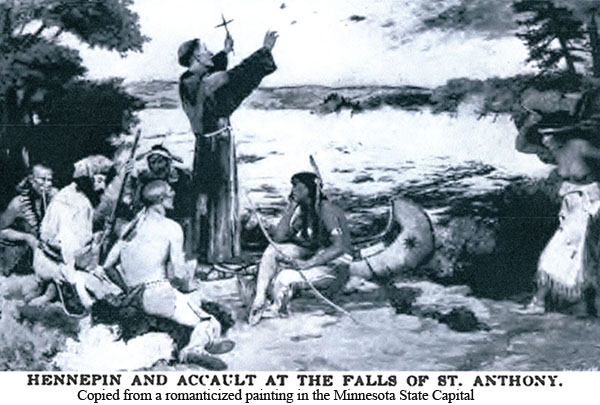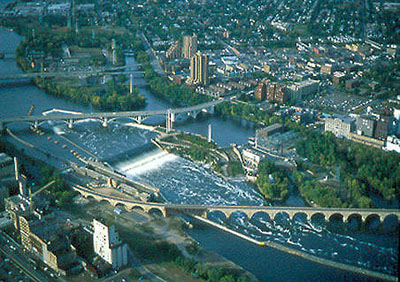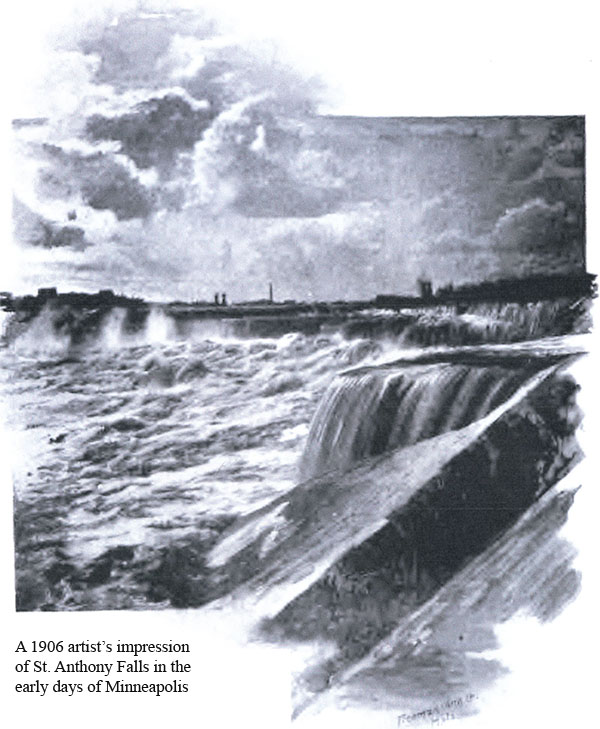St. Anthony Falls
Today, a lost and found story. The University of Houston's College of Engineering presents this series about the machines that make our civilization run, and the people whose ingenuity created them.
I've been reading the book Grand Excursion by Steven Keillor (Garrison's brother). It's about a free tour given to a large group by the Chicago & Rock Island Railroad in 1854. They'd just extended their rail service to the Mississippi and this would advertise it. Guests included the likes of former president Millard Fillmore, historian George Bancroft, and Yale scientist Benjamin Silliman. When they reached Rock Island, Illinois, they boarded the elegant steamboat War Eagle and continued up into Minnesota. The boat went as far as St. Anthony Falls, on the north side of present-day Minneapolis, just past St. Paul. There, the Mississippi plunged forty feet, barring further river traffic.
The Falls had once been the Dakota Indian's sacred cataract Owahmenah -- a wild tumble of water over great limestone rocks. In 1680, Franciscan friar Louis Hennepin named them after St. Anthony of Padua, the patron saint of lost things. Hennepin was the same missionary-explorer who'd brought Niagara Falls to the world's attention. St. Anthony Falls was smaller but still quite beautiful. And it was the only waterfall along the Mississippi.

The tour group had seen etchings of the Falls' wild beauty. Now they were greeted by logs and driftwood, piled above and below it. It was a great disappointment. St. Anthony Falls had already been harnessed for water power, and nature's beauty was being slowly buried. I was raised close by in St. Paul, and had always vaguely wondered where the waterfall was hidden. By then the Falls were quite lost to the casual onlooker. They'd been reworked as a power source for over a century and were overbuilt with turbine houses and a long spillway.
Those visitors witnessed only the beginning of the Falls' decline. Fifteen years later, as the decay continued, a concrete spillway was built to protect the eroding river banks. Finally, in 1885, the Water Power Company hired self-taught civil engineer John T. Fanning from New England to take charge of the power plant. 
Fanning helped to make the latest power plant functional while he worked on power development throughout the Northwest. He was also a scholar. Civil engineers still use his results to predict how the pressure of water drops when it flows through pipes. I've taught his methods in the classroom and used them in my own work.
Now the latest plant sits on that spot. Finished in 1963, it generates twelve megawatts. That's less than one percent of, say, the Niagara Falls plant, but enough to serve ten thousand homes. And it's now named after Father Hennepin. Now it includes locks that let boats continue north beyond the Twin Cities. And it's really quite attractive once more. Of course the Dakota's untamed Owahmenah is now gone. Yet perhaps St. Anthony can smile at what is there. For we have found at least some of that lost beauty once more.
I'm John Lienhard at the University of Houston, where we're interested in the way inventive minds work.
S. J. Keillor, Grand Excursion: Antebellum America Discovers the Upper Mississippi. (Afton Historical Society Press, 2004)
See this John A. Weeks article about St. Anthony Falls
This web site provides a short biography of Fanning. And this, the full text of Fanning's 1889 Treatise on Hydraulic and Water Supply Engineering. and this is the full text of Fanning's 1889 Treatise on Hydraulic and Water Supply Engineering.
For more on St. Anthony Falls (and Fanning), see the online version of H. B. Hudson's 1908 book, A Half Century of Minneapolis. Both renderings of paintings are from this source. The aerial view of the present day Falls are courtesy of Wikipedia Commons.
